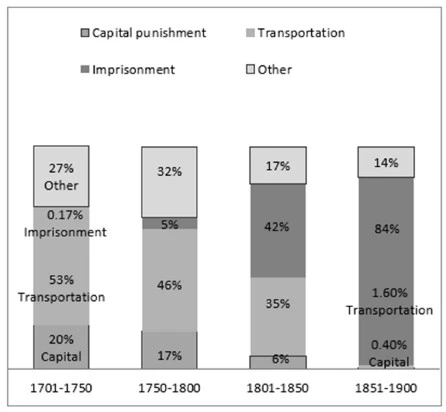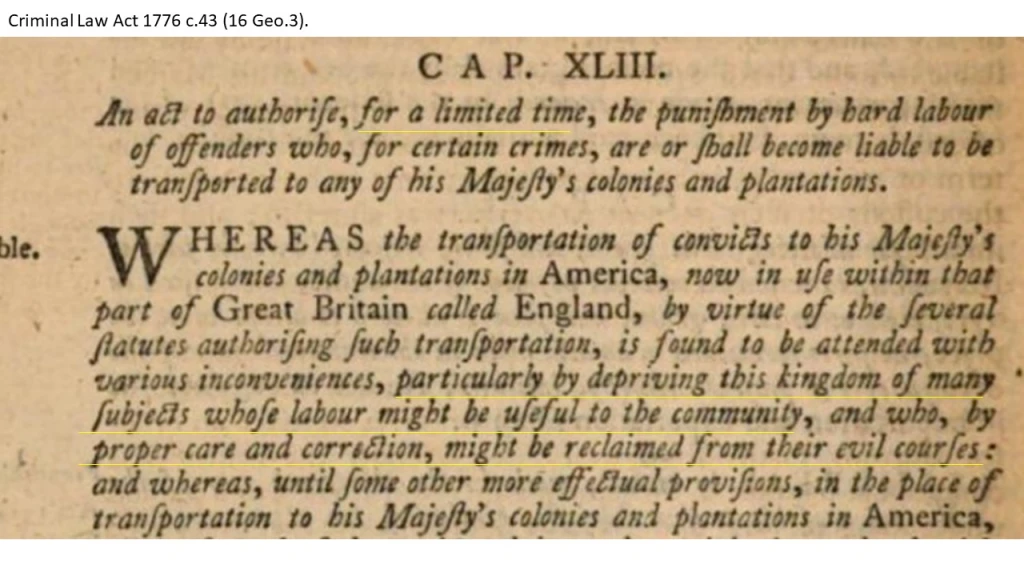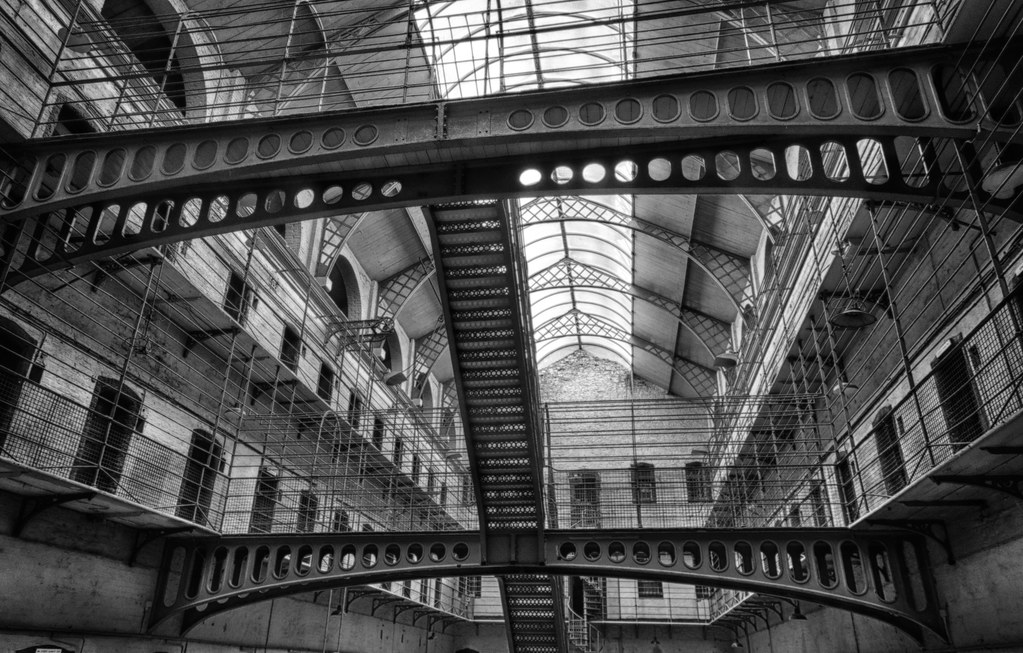
Susanna Menis
I was invited recently to give a 30-minute talk on my research on the historical development of English prisons in the eighteenth and nineteenth centuries. This was part of a seminar lunch series for the Ministry of Justice organised by Professor of History from the Open University, Rosalind Crone, and the Prison Policy Directorate. These seminars have aimed to encourage dialogue between historians and policymakers. However, as pointed out by scholars, this is not an obvious dialogue (Berkowitz, 1984; Rennie, 1998; Gavin, 2007; Haddon et al., 2015). Apart from the arguable interest of policymakers in what history has to say – ‘policymakers are not interested in the past for its own sake’ (Gavin, 2007, p.162) – and perhaps the preference of other disciplines such as economics that ‘address themselves more explicitly to the future’ (Berkowitz, 1984, p.80), Gavin argues that historians might not intuitively write to target a policymakers audience (2007, p.163).
My conclusion to the talk and the answer to one of the attendees’ questions, ‘What can we take away for our practice?’ – was that the best thing that they can take away is the knowledge of how and why things are the way they are, and the awareness that when a policy is drafted, for how modern it may appear, it sits within historical, socio-cultural, and political memory. Why does this matter? As Gavin (2007, p.166) indicates, this should encourage policymakers to challenge ‘the received wisdom about past and current’ policies. Thane (2009, p.142) put it eloquently when arguing that ‘long-established social roots of certain issues can lead to oversimplification and inadequate policy responses’. Furthermore, the Parliamentary Office of Science and Technology (2009, pp.1-2) suggests that historical analysis that addresses the rationale behind a past policy can help policymakers question accepted practice and it ‘can open up more options for dealing with current policy problems’, and that significantly, ‘the origins of current problems can be better understood by taking a longer view of their history’.
This blog entry explains how and why some of the main characteristics of the modern prison penalty, as we know it in the 21st century, are the way they are.
Why and how have prisons become a primary penalty in England?
During the eighteenth century, the criminal justice struggled to meet demands for adequate criminal punishment. The situation was reflected in two drawbacks. The first, in the reduced use of capital punishment, either through the jury finding people not guilty (even if they were), the judges interpreting the law in such a way that a capital offence would not be an option, or that the king would exercise the right to give pardon very generously.
The second drawback was transportation. This was the best and preferable penalty – and Parliament liked it. However, the colonies did not feel the same and eventually refused to take any more convicts altogether.
Prisons, on the other hand, functioned mainly as detention centers (before execution, waiting for trial, until the debt was paid and for minor corporal punishment and petty offences) up until the 1780s and were classified as a secondary penalty, hence not a sentence in its own right.
The government needed to find a contingency plan very quickly; this was when the idea was put forward that imprisonment would be upgraded literally to function as a primary penalty.
The problem faced by the policymakers was that none of the over 600 custodial facilities in the country (all owned and managed by charities or private individuals: castles, gaols, houses of corrections, etc.) could have been easily re-purposed. Although the courts naturally shifted towards the use of imprisonment instead of capital punishment and transportation, the state of these custodial facilities did not make them a viable alternative as a primary penalty.
Figure 1

Despite this, the government was desperate for Parliament to enact legislation that would elevate imprisonment into a sentence. This was achieved in two ways by softening the impact and implications of such a change (it is widely recorded that the British parliament did not appreciate sudden reforms):
First, the policymakers used a narrative in which ‘detention’/’imprisonment’ was not the punishment itself. This eliminated the problem of the lack of facilities for this purpose and the need to engage in expensive refurbishments. Instead, the proposed Bill introduced the principle of ‘hard labour’. The Hulks Act (prison ships) 1776 and the Penitentiary Act 1779 were not the original titles of the respective Bills: the first was originally titled in terms of hard labour by cleaning the Thames shores, whereas the 1779 Act was drafted as the 1778 Hard Labour Bill.
Second, the government promised Parliament that this was just an ‘experiment, particularly to answer the spur of the occasion. When tranquillity was restored to America, the usual mode of transportation might be again adopted.’
Figure 2

However, the final draft of the legislation reflected the concern that the principle of ‘hard labour’ had not been popular in Parliament, hence the renaming of the Penitentiary Act. Also, from the proposed building of eighteen new ‘Hard Labour houses’, the Act reduced the provision to only two; it removed the wording intended to differentiate these new prisons from the old, existing custodial facilities, thus nationalising the expensive administration of this new policy. Finally, Parliament backed down from its promise to sustain the initial building and maintenance costs.
Those supporting this penal reform believed that despite introducing an expensive administrative operation, it could eventually sustain itself by relying on prisoners’ labour. They even thought this would make the prison estate self-sustainable, reducing public expenditure. As we know, this never happened – at least not in the way it was intended.
Why and how did the ‘reform of the prisoner’ become a core penal aim?
The concept of the reform of the prisoner was introduced in the mid-eighteenth century when convicts were faced with the possibility that they would not be executed or sent to the colonies; instead, they might eventually rejoin society. The idea was borrowed from the practice of the Reformation of Manners campaign, where they aimed to eradicate social vice and deviant behaviour.
However, the policy setting up the penal aim of the ‘reform of the prisoner’ was driven by the fear of social mobility. This period faced economic growth (Wardley-Kershaw et al., 2022), and the upper classes were concerned that by attempting to emulate their lifestyle, the ‘lower order of people’ failed to cope with the ‘excess’ or the need to obtain this excess. Accordingly, criminality was an expression of this failed attempt.
The proposed solution emphasised education about the values of acceptable ‘morals’ and ‘habits’. This is how the idea of labour as a punishment was introduced because it was thought to ‘improve’ the convicts’ ‘morals’ by allowing them to develop a habit of steady and well-directed industry (Fielding, 1751).
However, the benefits brought by the engagements of Elizabeth Fry could not be replicated in the male prison population; hence, the ‘reform of the prisoner’ paradigm developed into a mass-frugal administrative operation in practice. Education was first replaced with religion and penitence, then discipline and uniformity.
Prison regimes were routinely reshaped and redesigned to fulfil this aim of imprisonment better. However, limitations related to ineffective prison management, expensive administration, and conflicting social aims and penal policies meant that prisoners’ reformation was only a theory.
Lesson from history
Policymakers should be mindful that broader historical socio-political concerns have shaped and affected the context of their work. Hence, they should be aware of policy decisions’ unintended consequences and side implications. In the historical context, the introduction of the principle of ‘hard labour’ as a narrative to justify imprisonment had consequences that were not initially anticipated, leading to adjustments in legislation and the adoption of a penalty suffering from drawbacks since its inception.
References
Berkowitz, E. (1984). History, Public Policy and Reality. Journal of Social History, 18(1), 79–89.
Fielding, H. (1751) An Enquiry Into the Causes of the Late Increase of Robbers, 2nd edn. London: A. Millar.
Gavin, F. J. (2007). History and Policy. International Journal, 63(1), 162–177.
Haddon, C., Devanny, J., Forsdick, C., & Thompson, A. (2015, January 22). What is the value of history in policymaking? Institute for Government. Report: Art and Humanities Research Council. Available https://www.instituteforgovernment.org.uk/sites/default/files/publications/Making%20History%20Work%20Report%20-%20Final_0.pdf (accessed 8 Jan 2024).
Rennie, R. (1998). History and policy-making. International social science journal, 50(2), 289-301.
Thane, P. (2009). History and Policy. History Workshop Journal 67, 140-145.
Parliamentary Office for Science and Technology, Postnote, January 2009, Number 323. https://www.parliament.uk/globalassets/documents/post/postpn323.pdf
Wardley-Kershaw, J. and Klaus R.S.H. (2022). Economic Growth in the UK: The Inception. World 3, no. 2: 162-174.
About the author
Susanna Menis is a Lecturer in Law at Birkbeck London University, School of Law. She is the author of A History of Women’s Prisons in England: The Myth of Prisoner Reformation (Cambridge Scholars Publishing, 2021).
Contact
Susanna Menis,
School of Law, Birkbeck,
University of London,
Malet Street,
London
WC1E 7HX,
https://smenis.wixsite.com/dr-susanna-menis
This article gives the views of the author, not the position of the British Society of Criminology or the institution they work for.


You must be logged in to post a comment.